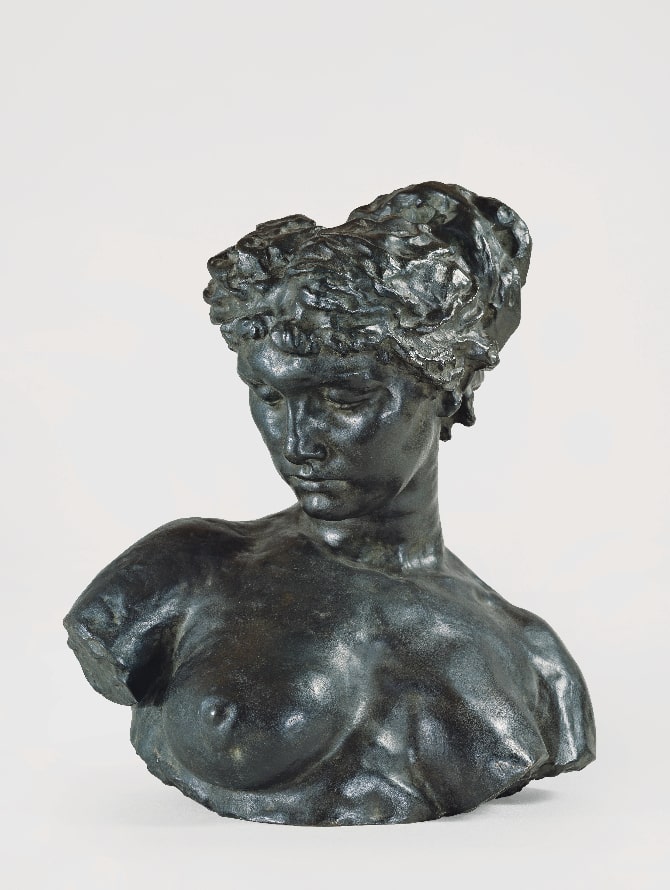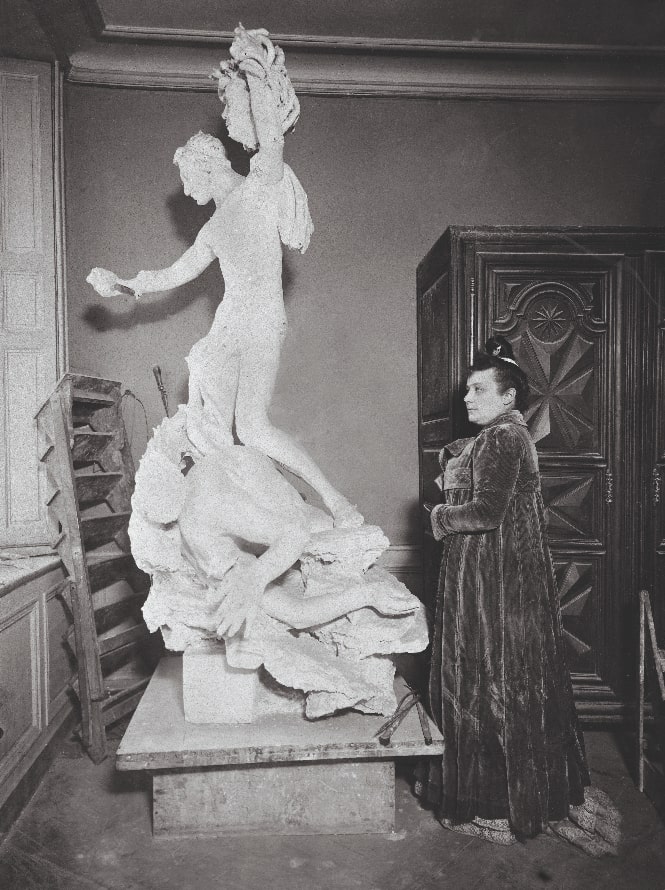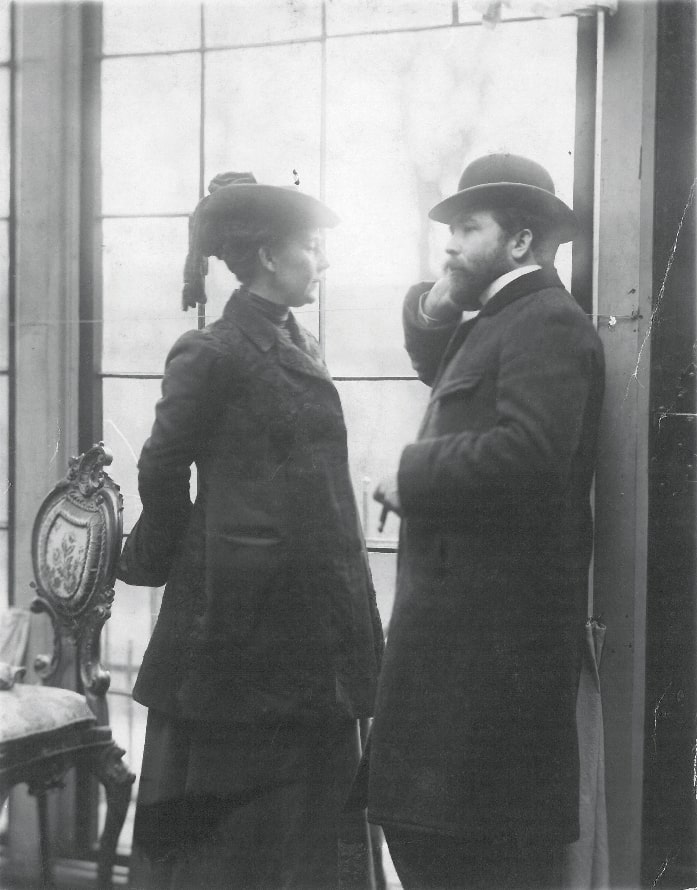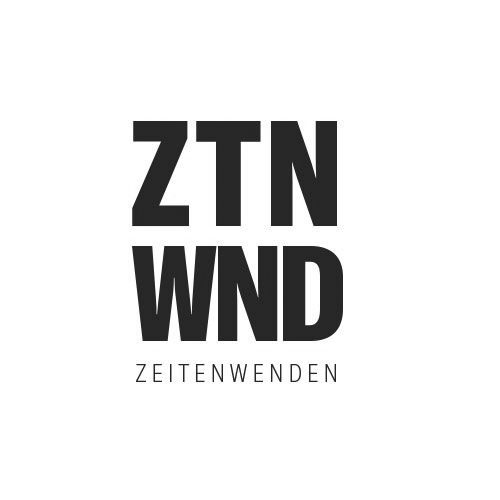For the first time since 1905, the Alte Nationalgalerie is bringing together the sculptures of two artists whose work and paths crossed several times in Paris: Camille Claudel and Bernhard Hoetger. Both are united by their striving for recognition and their simultaneous rejection of the master of French sculpture, Auguste Rodin. In the midst of the Parisian avant-garde, both the French sculptor and the German sculptor, who was ten years younger, developed an artistic vitality that developed international appeal and is now being presented to the public together again after 120 years.
Image above: Camille ClaudelL’Implorante (Die Flehende), 1894–1905, Guss um 1905 Bronze, 28,5 x 35 x 16,5 cm (kleine Version) Berlin, Alte Nationalgalerie / Fotograf: Jan Brockhaus
The Alte Nationalgalerie is dedicated to an encounter in early 20th century European art history that has received little attention and hardly been researched to date: Camille Claudel (1864-1943) and Bernhard Hoetger (1874-1949). In 1905, the Parisian gallery owner Eugène Blot organised a double exhibition for the French sculptor Camille Claudel and the young German artist Bernhard Hoetger.

Twelve bronzes by Claudel were presented, including now internationally recognised icons such as La Valse (1889-1905), L’Implorante (1894-1905) and La Vague (1897), as well as 46 bronze sculptures by Hoetger, complemented by plaster casts and drawings by the artist.

This exhibition and the encounter with the accomplished Impressionist dealer Blot were of central importance for both artists. For Claudel in particular, this meant an increasingly independent perception and dissemination of her oeuvre, which established her as one of the most important artists of her time. Hoetger also celebrated his artistic breakthrough in Paris with this exhibition.

Thematic rooms in the Alte Nationalgalerie contextualise the works of the two artists presented in 1905 in the Parisian art scene and the Impressionist movement.
In 2024, the Alte Nationalgalerie succeeded in acquiring a bronze by Camille Claudel with the support of the Ernst von Siemens Art Foundation. Claudel’s L’Implorante (1894-1905) not only establishes a direct link to the works of her teacher, mentor and lover Auguste Rodin (1840-1917) already in the Nationalgalerie’s collection, but also closes a crucial gap in the field of Impressionist sculpture and adds a significant position to the collection of female artists.

The exhibition ‘Camille Claudel and Bernhard Hoetger. Emancipation from Rodin’ in the Alte Nationalgalerie shows around 140 objects, including 67 works by Claudel and Hoetger. In addition to works from the Alte Nationalgalerie, the Kupferstichkabinett and the Kunstgewerbemuseum, numerous international loans will be presented.
The Alte Nationalgalerie is supplementing the selection of works previously shown at the Paula Modersohn-Becker Museum in Bremen from 25 January to 18 May 2025 with works from its own collection and other loans. From 12 September 2025 to 10 January 2026, the Bremen selection of works will be presented at the Musée Camille Claudel in Nogent-sur-Seine, France.

The exhibition is accompanied by an extensively illustrated 176-page catalogue in German and English, sponsored by the Ernst von Siemens Art Foundation.
The exhibition is curated by Yvette Deseyve, deputy director of the Alte Nationalgalerie and curator of sculpture, with the collaboration of Sintje Guericke, research assistant at the Alte Nationalgalerie.
The exhibition is made possible by the Friends of the National Gallery.
WHERE?
Opening: Thursday, 5 June 2025, 7 pm
Exhibition dates: Thursday, 6 June 2025 until Sunday, 28 September 2025
WHEN?
Alte Nationalgalerie – Museumsinsel Berlin
Bodestr. 1-3
10178 Berlin






